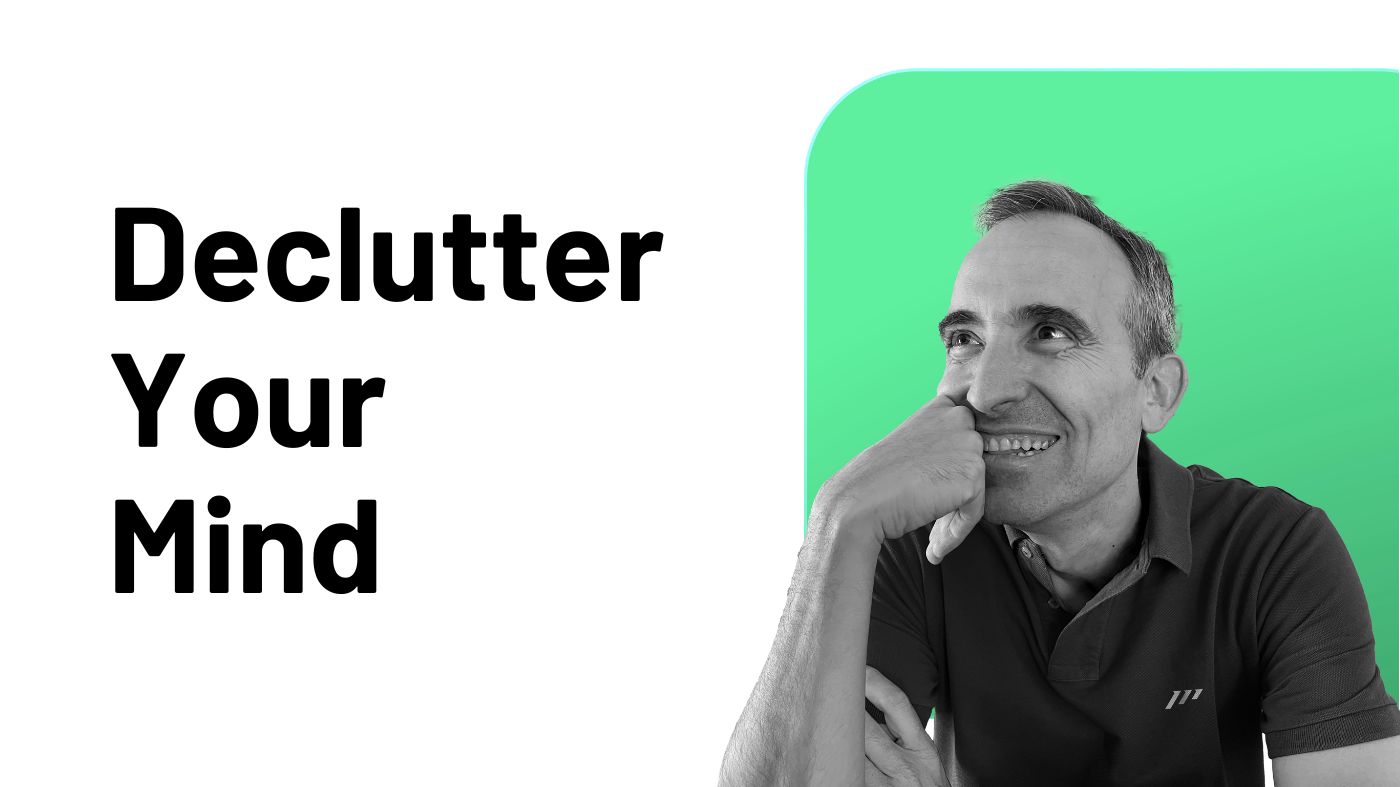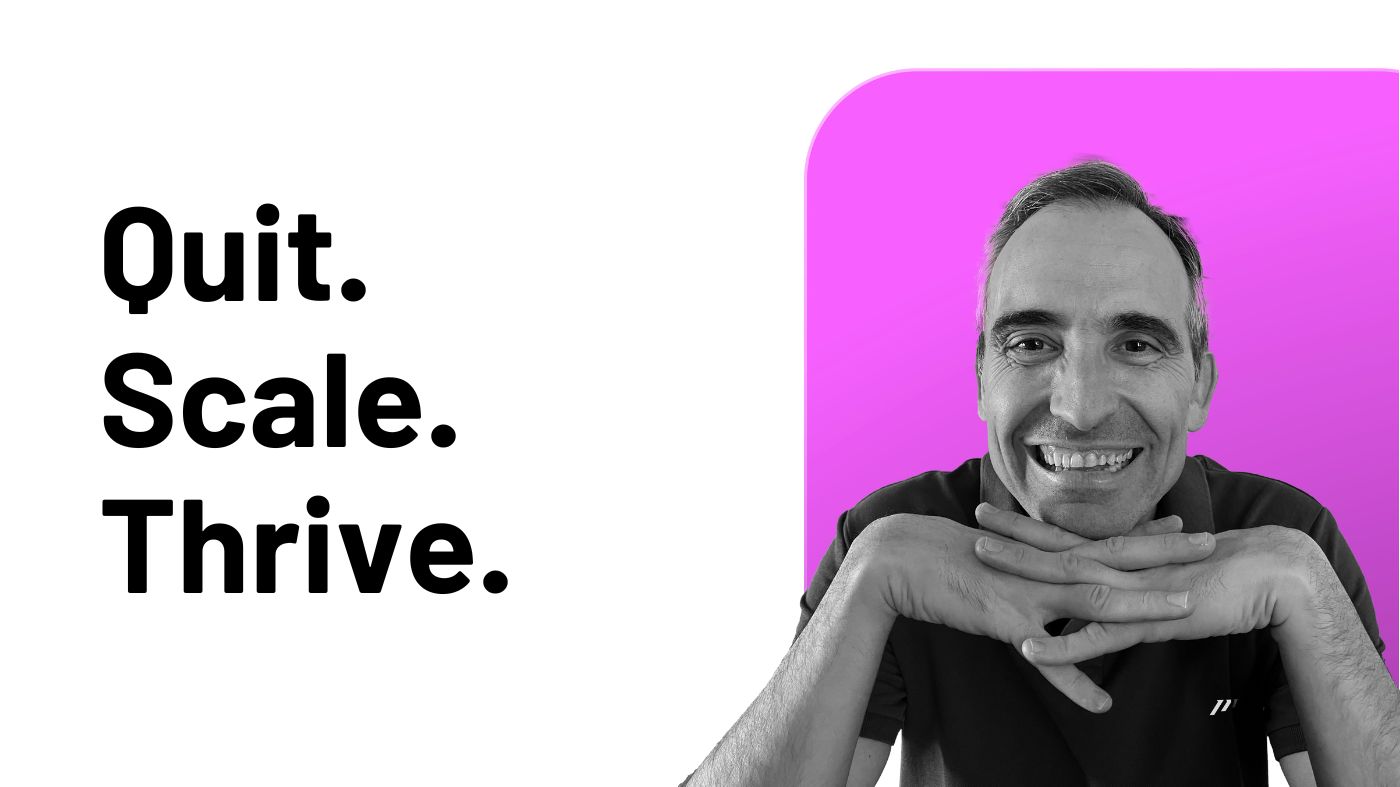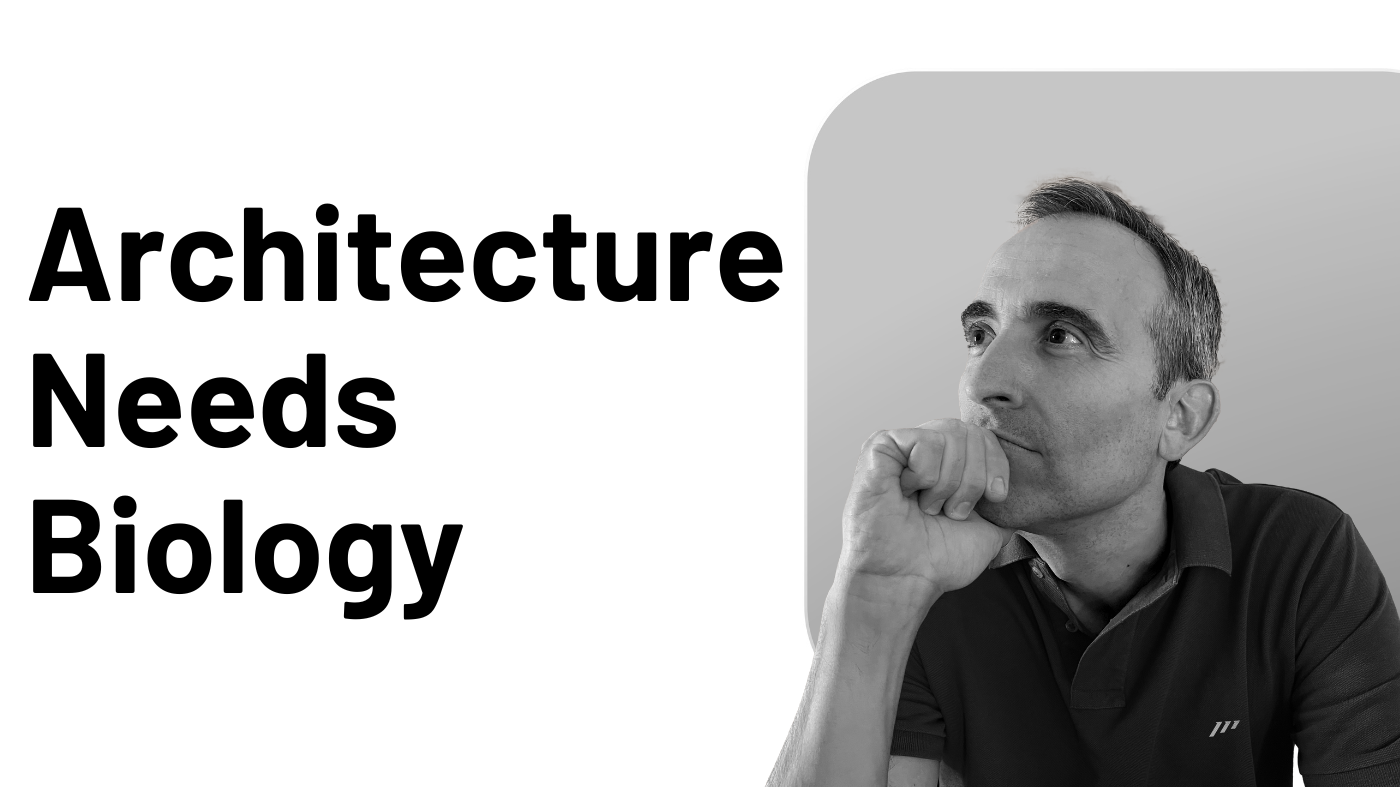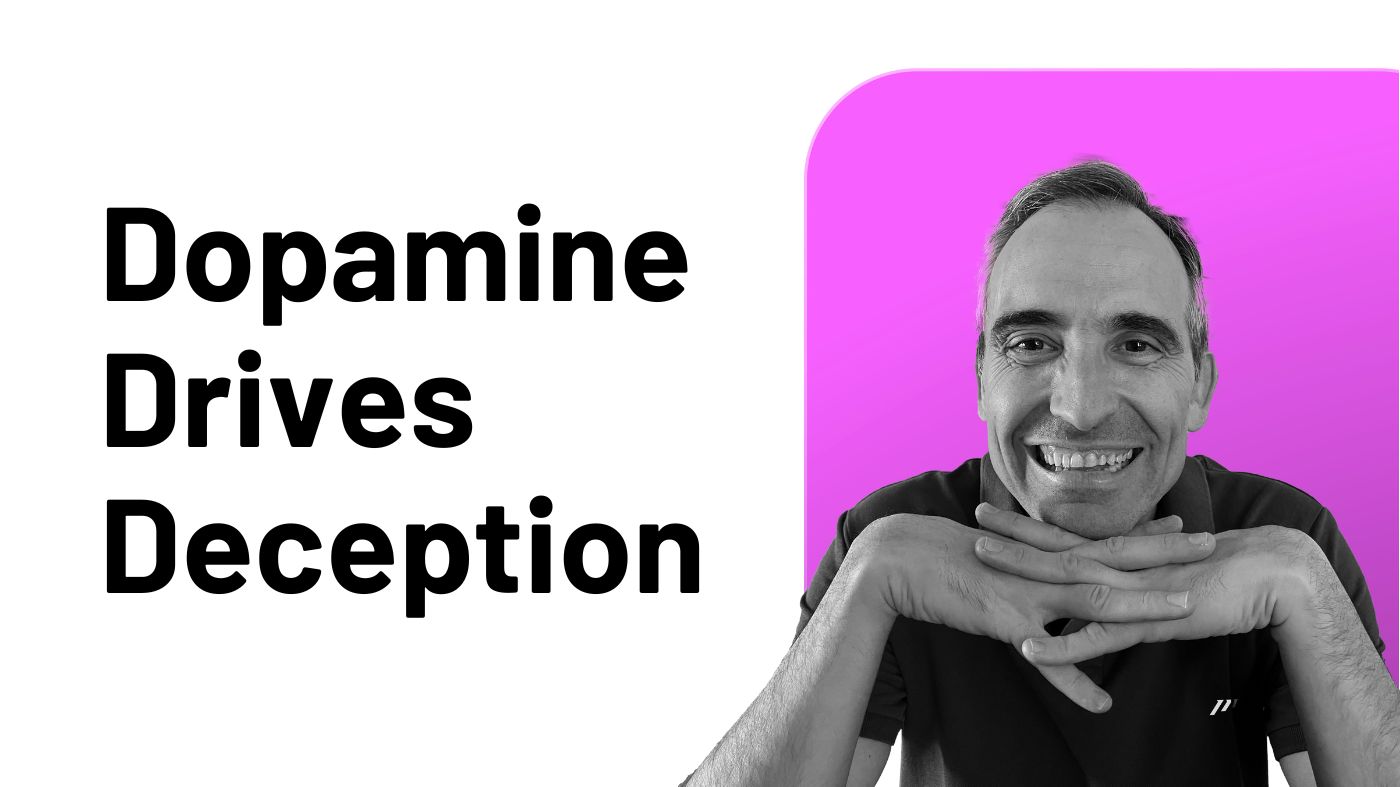The average busy professional:
-
Receives 120+ emails per day.
-
Gets interrupted 50-60 times during work hours.
-
Spends 2.5 hours searching for information daily.
-
Switches between 25+ apps throughout the week.
-
Attends 62 meetings monthly, generating countless notes.
-
Handles 200+ Slack messages every working day.
And somewhere in this chaos, they’re expected to deliver deep, meaningful work.
Sound familiar?
As a busy professional myself, I know this reality all too well.
The constant barrage of information from emails, messages, documents, meetings, and digital tools isn’t just overwhelming – it’s exhausting.
It fragments our attention, derails our focus, and leaves us feeling like we’re always playing catch-up instead of moving forward.
The worst part?
Traditional advice about “just saying no” or “better time management” doesn’t address the root of the problem.
The information will keep coming whether we like it or not.
What we need isn’t another productivity hack.
We need a complete productivity system to handle this overflow without letting it consume us.
Stop Chasing Tools: Why Your Solution Lies in Something More Powerful
If you’re like most busy professionals, you’ve probably tried countless productivity tools promising to solve your information overload.
Each new app claims to be the ultimate solution, yet somehow the overwhelm persists.
Why?
Because tools alone can’t solve a systemic problem.
“The problem is never how to get new, innovative thoughts into your mind, but how to get old ones out.” — Dee Hock
The real solution isn’t about finding the perfect tool – it’s about understanding the fundamental concepts and workflows that make any tool effective.
Think of it like learning to cook: mastering basic techniques matters more than having expensive equipment. A skilled chef can create amazing dishes with basic tools, while even the finest kitchen won’t make an amateur into a master chef.
This tool-agnostic approach focuses on two essential elements:
-
Concepts: The building blocks of your productivity system. These are the principles that help you understand how to process, organize, and act on information effectively. Once these concepts become second nature, you can apply them using any tool.
-
Workflows: The step-by-step processes that turn concepts into action. These are the repeatable sequences that guide you from information input to meaningful output. When your workflows are clear and logical, implementing them in any tool becomes straightforward.
By mastering these fundamentals first, tool selection becomes secondary.
You’ll be able to evaluate and implement any tool based on how well it supports your established concepts and workflows, rather than adapting your work style to fit a tool’s limitations.
This is exactly why we developed ICOR® at the Paperless Movement® – a comprehensive methodology that provides busy professionals with clear, proven concepts and workflows that can be implemented in any tool.
No more guesswork, no more tool-hopping, just a reliable productivity system that works.
How to Overcome Information Overload: The Only Two Strategies You’ll Ever Need
After working with thousands of busy professionals, we’ve discovered that overcoming information overload boils down to just two essential strategies.
No complex systems, no endless lists of tips and tricks – just two powerful approaches that, when implemented correctly, transform how you handle information.
Strategy #1: Create Structure with the MY LIFE Concept
The first step is creating a clear structure that makes handling information intuitive and effortless.
This is where the MY LIFE concept comes in – a revolutionary approach that organizes your digital world the same way your brain naturally processes information.
Think of MY LIFE as your digital architecture.
Just as a well-designed building guides people effortlessly through its spaces, MY LIFE guides information smoothly through your productivity system.
It creates natural boundaries and clear pathways for information to flow, eliminating the chaos and confusion that leads to overwhelm.
Strategy #2: Implement with the Simplest Tool Stack Possible
The second strategy is implementing your productivity system using the minimum number of tools necessary.
This isn’t about finding the “perfect” tool. It’s about creating the simplest possible productivity system that fully supports your needs.
We’ve seen too many professionals fall into the trap of complex tool stacks that create more problems than they solve.
The key is choosing fewer, better-integrated tools that align perfectly with your MY LIFE structure.
This minimalist approach reduces friction, eliminates redundancy, and makes your productivity system easier to maintain.
In the following sections, we’ll dive deep into each of these strategies, showing you exactly how to implement them in your own work life.
The MY LIFE Concept: Why Boundaries Are Your Secret Weapon
Imagine having a filter that automatically shows you what deserves your attention and what doesn’t.
Imagine knowing exactly what to focus on and what to ignore, without second-guessing or FOMO.
This isn’t just a dream: it’s what the MY LIFE concept delivers.
The Counter-Intuitive Power of Boundaries
Here’s a truth that transformed how we work with busy professionals: complete freedom is the enemy of productivity.
When everything seems important, nothing truly is.
When you try to capture everything, you drown in noise.
The solution? Strategic boundaries.
Think about a river. Without banks to guide it, water spreads everywhere, losing its power. But with clear boundaries, that same water becomes a focused force, capable of carving through mountains.
Your information flow works the same way.
Boundaries aren’t restrictions – they’re focusing tools. They help you:
-
Instantly recognize what deserves your attention.
-
Filter out distracting noise.
-
Make decisions faster and with more confidence.
-
Maintain focus on what truly matters.
The Three Pillars of MY LIFE
The MY LIFE concept creates order from chaos by organizing your world into three powerful categories:
-
Current Projects: Your immediate focus areas. These are the active initiatives that directly contribute to your goals. When information relates to these projects, it gets priority attention.
-
Key Elements: The core aspects of your professional life that need consistent attention – your role, your team, your key relationships, or your primary responsibilities.
-
Topics: A maximum of three areas you’re currently developing or exploring. By limiting yourself to just three topics, you ensure deep progress instead of shallow dabbling.
The Game-Changing Benefits
Once this structure is in place, three powerful transformations occur:
-
You face the world backed by this structure so you never go out there and face the void. You go out there with a structure of mind that helps you distinguish between what is worth it and what is not. What deserves your attention and what you shouldn’t pay attention at all.
-
You’re able to implement The Capturing Beast, a powerful ICOR® workflow that tells you exactly that: based on the MY LIFE structure, you now know what to capture and, more importantly, where to store it to retrieve it later effortlessly, just following your intuition.
-
You’ve found out a way of creating a standard structure that makes sense to you and will be easy to implement no matter the tool stack you bet on.
From Overwhelm to Control: Your Daily Reality Transformed
When you implement the MY LIFE concept:
-
You’ll stop feeling guilty about ignoring non-essential information, as you’re 100% sure it’s not worth it.
-
Decision-making becomes faster and more confident.
-
Your attention naturally flows to what matters most.
-
The overwhelming flood of information transforms into a manageable stream.
In your overwhelming reality is not so important to know what to capture than knowing what you shouldn’t capture and not feeling guilty because of it. FOMO doesn’t exist any more.
“In the digital era, context and connection are more important than ever before.” — John Seely Brown
The beauty of this approach is its simplicity.
Instead of complex rules or endless categorization, you have three clear questions:
-
Does this relate to my Current Projects?
-
Does this impact my Key Elements?
-
Does this align with my Focus Topics?
If the answer is no to all three, you can confidently set that information aside.
Why Just Three Topics? The Power of Limitation
“Only three topics? That’s impossible!”
This is often the first reaction we hear from busy professionals.
In a world that celebrates multitasking and endless pursuits, limiting yourself to three focus topics seems radical.
But here’s the breakthrough insight: trying to develop more than three topics simultaneously doesn’t lead to faster growth – it leads to scattered attention and superficial progress. It’s like trying to dig three deep wells instead of fifteen shallow ones. The deep wells reach water; the shallow ones just reach dirt.
By limiting your focus topics to three:
-
You give each topic the depth of attention it deserves.
-
You make meaningful progress instead of superficial advances.
-
You can rotate topics quarterly, for example, ensuring steady progress across all your interests over time.
-
You eliminate the guilt of “not doing enough” because you know you’re focusing on what matters most.
The beauty of this approach lies in its flexibility.
You can review and adjust your three main topics whenever it makes sense for you – monthly, quarterly, or even yearly. This ensures your focus areas always align with your current priorities and goals.
Here’s another liberating truth: limiting yourself to three focus topics doesn’t mean ignoring everything else that interests you.
When you encounter valuable information about other topics, you can still capture it using The Capturing Beast process.
The difference is that you simply store it for later without diving deep into it now.
Think of it as collecting seeds for future gardens – you’re not planting them all at once, but you’re saving them for when the time is right.
This isn’t about limiting your potential – it’s about maximizing your impact through focused attention.
The Capturing Beast Workflow: Transform MY LIFE from Concept to Reality
At the Paperless Movement®, we’re not theoretical gurus living in a laboratory.
We’re pragmatic professionals who understand that concepts only matter when they work in the real world.
That’s exactly why we developed the ICOR® Workflows – to move powerful concepts into practical action.
The Capturing Beast is the perfect example of this approach. It takes the elegant structure of the MY LIFE concept and transforms it into a real-world workflow that any busy professional can implement immediately.
“People who can quickly distinguish what matters from what doesn’t gain a huge advantage in a world where the flow of information never stops.” — Shane Parrish
Now that you understand how the MY LIFE concept creates natural boundaries through Current Projects, Key Elements, and Topics, it’s time to put this powerful structure into action.
Enter The Capturing Beast – the game-changing workflow that transforms how you face the endless stream of information coming your way.
Think of The Capturing Beast as your trusted guardian, protecting you from information overload while ensuring you never miss what truly matters. It takes the theoretical structure of MY LIFE and turns it into an intuitive filtering system that works on autopilot.
For busy professionals drowning in information, The Capturing Beast is your lifeline. It eliminates the anxiety of potentially missing important information while freeing you from the burden of trying to capture everything.
Here’s a liberating truth to ease your mind: Even if you stopped consuming new information today, you could still live a meaningful, successful life. You already possess immense knowledge and capability – information should serve your growth, not control it.
The Capturing Beast works by turning the three elements of MY LIFE into active filters:
-
Current Projects Filter: Instantly identifies information that directly impacts your active initiatives
-
Key Elements Filter: Catches anything relevant to the core aspects of your professional life
-
Topics Filter: Channels information related to your three focus areas
When information passes through these filters, it gets stored in what we call “buckets” – dedicated spaces within your productivity system that align with your MY LIFE structure. Think of buckets as intelligent containers that:
-
Organize information based on its natural context.
-
Make retrieval intuitive and effortless.
-
Eliminate the stress of “where should I put this?”
-
Allow for organic connections between related items.
The beauty of buckets is their flexibility – a piece of information can live in multiple buckets if it serves multiple purposes. This creates a dynamic, interconnected knowledge base that grows with you.
The real power of The Capturing Beast reveals itself in daily practice. Imagine:
-
Reading an article and instantly knowing whether it deserves your attention.
-
Feeling zero guilt about ignoring information that doesn’t align with your current focus.
-
Knowing exactly where to store valuable information for easy retrieval.
-
Breaking free from the anxiety of information overload.
-
Building a knowledge base that actively supports your goals.
In the next section, you’ll discover exactly how I’ve implemented this productivity system across different tools in my productivity stack.
You’ll see how the combination of MY LIFE’s structure and The Capturing Beast’s workflow creates a seamless productivity system that runs on autopilot, ensuring you’re always capturing what matters while confidently letting go of what doesn’t.
Inside My Perfect Tool Stack: What I’ve Learned Testing Hundreds of Tools Over Decades
Now that you understand the power of MY LIFE and The Capturing Beast, let’s explore how to implement these game-changing concepts across your productivity tools.
What you’re about to discover isn’t a template to copy. Instead, it’s a practical demonstration of how these concepts seamlessly adapt to various tools, empowering you to craft a system that feels natural and intuitive to you.
Remember this crucial truth: The most effective productivity system is one that aligns with your natural thought processes. That’s why simply copying someone else’s setup rarely works – your system needs to reflect your unique way of thinking and working.
The beauty of having a crystal-clear MY LIFE structure is that implementing it becomes remarkably straightforward across any tool. Once you understand the core concepts, you’ll find that adapting them to your preferred tools feels almost effortless.
Heptabase: My Visual Canvas for Deep Thinking
Heptabase stands as our cornerstone tool for Deep Thinking, where complex ideas transform into clear, actionable insights.
Its visual environment makes it the ideal starting point for implementing the MY LIFE structure.
My implementation follows a clear hierarchical approach:
-
A main MY LIFE whiteboard serves as the central hub.
-
Three dedicated sub-whiteboards represent:
-
Current Projects.
-
Key Elements.
-
Topics.
-
Each bucket within these categories starts as a single card.
-
When a card’s content grows complex, it evolves into a dedicated whiteboard.
-
This organic growth ensures information remains structured and accessible.
This dynamic structure allows my knowledge to expand naturally while maintaining perfect clarity.
When I revisit any whiteboard, I find my entire thinking process and knowledge base perfectly preserved and ready to access.
The tool’s powerful features further enhance this organization through:
-
Intuitive color coding for different elements.
-
Clear relationship mapping with arrows and connections.
-
Flexible scaling based on complexity.
-
Visual hierarchies that mirror my thought processes.
The result is more than just a digital workspace – it’s a living “map of MY LIFE” that becomes deeply ingrained in my cognitive processes, guiding my productivity naturally and effectively.
Readwise Reader: My Gateway to the Outer World
I use Readwise Reader as my primary interface with the Outer World—that vast ecosystem of external information including articles, newsletters, PDFs, YouTube videos, podcasts, and any other content created by others.
While this endless stream of information could be overwhelming, I’ve transformed it into a manageable flow through my implementation.
Here’s exactly how I use it:
-
I leverage tags as my buckets, creating a personalized categorization system.
-
I assign multiple tags to each piece of content, allowing it to exist in various buckets simultaneously.
-
When I need to retrieve anything, I quickly filter by the tags I’m interested in.
-
I use the highlighting and annotation features to capture my insights instantly.
This approach has transformed what could be overwhelming content management into my streamlined, efficient workflow.
This clear separation between external content (Outer World) and my own thoughts (Inner World) allows me to process information confidently and without overwhelm.
Tana: My PKM Powerhouse
I use Tana as the central hub of my Personal Knowledge Management (PKM) system, where I seamlessly merge my Shallow Thinking and Deep Thinking processes.
My implementation of the MY LIFE concept in Tana is elegantly simple yet incredibly powerful.
Here’s exactly how I structure it:
-
I create supertags for my Projects, Key Elements, and Topics.
-
I maintain a central MY LIFE node as my command center.
-
I set up dynamic search filters for instant access to my content in that node.
-
I leverage automated grouping to keep everything perfectly organized.
-
I use Tana’s intuitive navigation to traverse my knowledge landscape effortlessly.
This structure has transformed my complex information management into a fluid, natural process that perfectly matches my thinking patterns.
The beauty of Tana is how it adapts to my specific needs while maintaining the integrity of my MY LIFE structure.
Mymind: My Visual Knowledge Repository
Within my PKM ecosystem, I use Mymind specifically for managing visual content, particularly images I discover across the internet.
It’s my dedicated tool for visual information management, and I’ve implemented it to maintain perfect harmony with my broader system.
Here’s how I use it:
-
I organize visual content using tags as buckets, just like in my other tools.
-
I maintain seamless integration with my broader PKM strategy.
-
I apply the same MY LIFE principles to ensure consistency across all my visual assets.
-
I leverage its AI-powered features to enhance my visual content organization.
-
I use its quick capture capabilities to save images without disrupting my workflow.
File System (Google Drive): My Digital Archive
For comprehensive file management, I leverage Google Drive’s robust infrastructure to create a crystal-clear representation of my MY LIFE structure.
This is where I store and organize all my digital files in perfect alignment with my broader system.
Here’s exactly how I structure it:
-
I start with a root folder named “MY LIFE” as my foundation.
-
Inside, I create three primary folders that mirror my core components:
-
Current Projects.
-
Key Elements.
-
Topics.
-
Within each primary folder, I maintain sub-folders for specific elements.
-
I use consistent naming conventions to ensure quick recognition.
-
I leverage Google Drive’s powerful search capabilities for rapid retrieval.
This hierarchical structure ensures that even my traditional file management perfectly aligns with my broader productivity system.
The beauty of this approach is its simplicity – I always know exactly where to store and find any file I need.
Todoist: My Action Management Hub
While I’ve focused primarily on information management tools, I also use the MY LIFE concept in my action management tools.
Todoist is my go-to tool for managing Speedies, those quick tasks that take less than 15 minutes to complete, and I’ve implemented my system here in a unique way.
Here’s exactly how I use it:
-
I repurpose Todoist’s “Projects” feature to represent my Key Elements.
-
I’ve created five specific Key Elements:
-
Four for my different businesses.
-
One for my personal life.
-
Every time I capture a Speedy, I immediately assign it to the relevant Key Element.
-
I use Todoist’s filtering capabilities to:
-
Get instant context for any Speedy.
-
Reduce noise in my system.
-
Focus only on what matters now.
-
Process tasks efficiently.
This implementation shows how versatile the MY LIFE concept is – it works just as effectively for action management as it does for information management.
The key is adapting the tool’s features to match your mental model, not the other way around.
The Power of Unified Implementation
As you can see, the true magic of the MY LIFE concept lies in its universal applicability across any tool in your productivity stack.
This consistency creates a powerful advantage:
-
One unified approach to both Outer and Inner worlds.
-
Minimal friction in daily operations.
-
Intuitive storage and retrieval.
-
Natural, autopilot navigation of YOUR LIFE.
-
Perfect alignment with your cognitive processes.
This tool-agnostic approach doesn’t diminish the importance of tools – rather, it ensures they serve your natural thought processes.
By maintaining one consistent methodology across your digital ecosystem, you create a frictionless experience that mirrors your brain’s natural operations.
Remember: You have one brain and one life.
Your digital systems should reflect this unity, creating a seamless bridge between your thoughts and your tools.
Your Next Steps: From Overwhelm to Effortless Productivity in 72 Hours
After decades of refining these approaches, I can confidently say this: implementing MY LIFE will transform your productivity landscape faster than you might expect.
Here’s why it works so effectively.
First, it aligns perfectly with your brain’s natural way of processing information.
You’re not learning a new system – you’re simply structuring your digital world to match your mental one.
This natural alignment is why all of our clients report feeling “at home” with their productivity system within just 72 hours of implementation.
Here’s your action plan for the next three days.
Day 1: Start Small but Strategic
-
Choose just one tool from your current stack. I recommend your main PKM tool.
-
Implement the MY LIFE structure (Current Projects, Key Elements, Topics).
-
Begin categorizing any new incoming information using this structure.
Day 2: Expand Your Implementation
-
Add a second tool to your MY LIFE structure. Maybe your file system.
-
Notice how the same principles apply effortlessly.
-
Start connecting information between your tools if necessary.
Day 3: Experience the Transformation
-
Observe how naturally you navigate between tools.
-
Feel the reduced mental friction in your workflow.
-
Watch your productivity soar as everything finds its natural place.
Remember this crucial truth: You already have everything you need to succeed.
Your brain naturally knows how to process information – MY LIFE simply provides the structure to make it effortless in our digital world.
The beauty of this approach isn’t just its simplicity – it’s its immediate impact.
You don’t need weeks or months to see results.
Each small implementation/iteration of this process immediately reduces friction in your workflow.
Start today. Choose one tool. Create the MY LIFE structure.
And watch as your productivity system transforms from a source of stress into a source of clarity and confidence.
Your future self will thank you for taking this step toward true productivity mastery.




